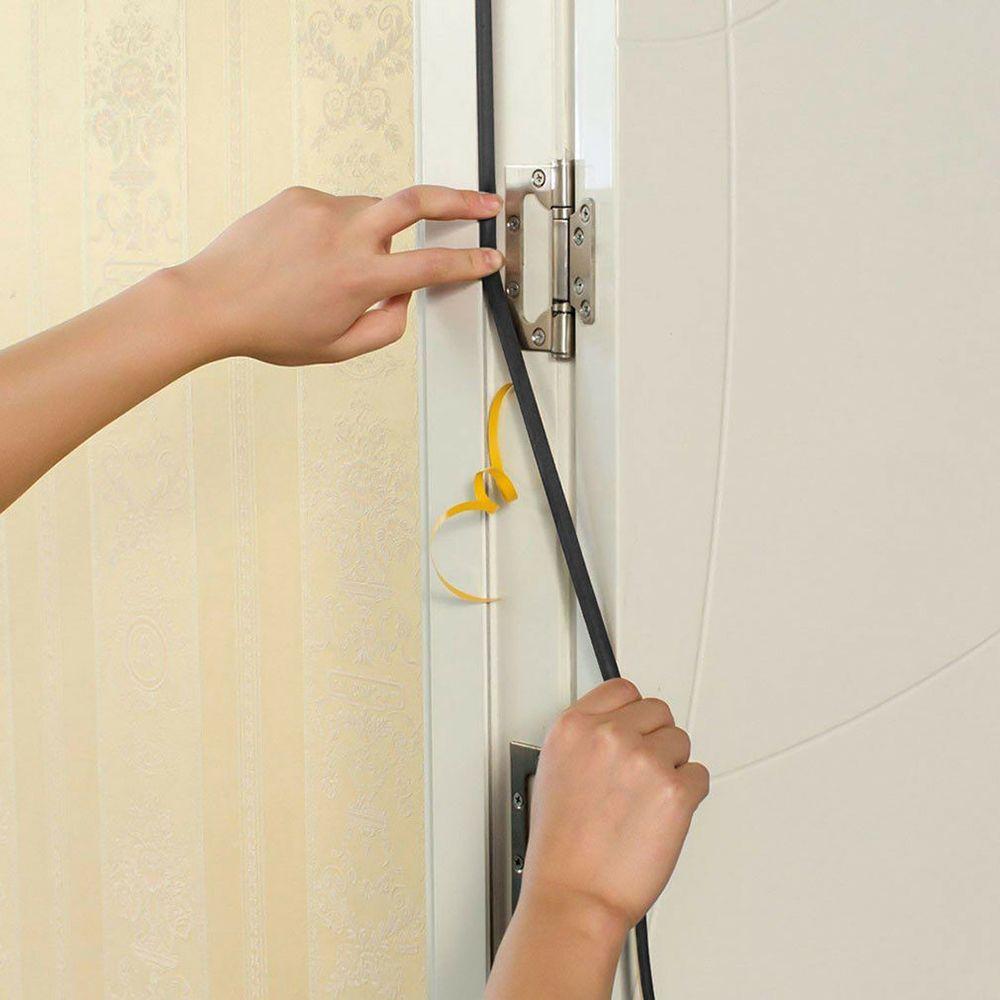
Noise pollution is a serious concern in today's world with urbanization and congested housing complexes. The constant noise from neighbors, traffic, construction work etc. can negatively impact our quality of life and health. While we cannot control external noise sources, we can look at ways to soundproof our homes and create an oasis of peace and quiet. One effective and affordable way is through the use of soundproof sealing strips.
What are Soundproof Sealing Strips?
Soundproof sealing strips are thin pieces of material that form a barrier between two surfaces to block noise transmission. They come in rolls and are self-adhesive, making them easy to apply around doors, windows or any gaps and cracks in walls and floors. Most modern Soundproof Sealing Strip Market contain a combination of absorptive materials like foam with an impervious skin or membrane layer that blocks the transfer of vibrations. This dual-layer design enables them to effectively reduce the passage of noise both by absorbing sound waves and stopping vibrations that carry noise.
Types of Soundproof Sealing Strips
There are different types of sealing strips available depending on the noise blocking requirements:
- Foam sealing strips: Made purely from foam that absorbs noise well but offers minimal vibration isolation. Suitable for low to medium noise areas.
- Dual-density foam strips: Contain a soft absorbing inner foam backed by a denser foam skin for improved noise blocking.
- Membrane sealing strips: Feature a thin flexible plastic or rubber membrane layer bonded to an absorbing foam. Provide high noise reduction for louder environments.
- Heavy-duty vinyl strips: Thick vinyl sealing strips that offer maximum sound insulation for areas with very high noise levels like above garages.
- Acoustic sealants: Flexible sealants that come in tubes for sealing irregular gaps and cracks. Need to be applied professionally for best results.
Installing Sealing Strips Around Doors and Windows
Perhaps the most common and effective use of sealing strips is around doors and windows to plug air gaps. This is where a significant amount of external noise enters our homes. To install:
- Clean and dry the surfaces around the entire perimeter of the door/window frame.
- Peel off the backing paper from one side of the sealing strip roll.
- Apply the adhesive side firmly all along the joins between the frame and walls. Make sure it adheres well without any gaps or air bubbles.
- Cut off any excess strip with a utility knife. Smooth it down with your finger.
- Apply a second layer of seal if there are still visible gaps once dried.
With doors and windows now nicely sealed, you can immediately notice a difference in the muffled sound levels inside. But noise can also pass through gaps in floors, walls, electrical sockets etc.
Sealing Other Areas
Here are some other key areas that can be soundproofed with sealing strips:
- Wall-floor joins: Apply soundproof strips at the base of all interior and exterior walls.
- Electrical sockets: Seal around switch boxes and outlet boxes protruding from walls.
- Pipes and vents: Insulate areas where plumbing, drain or ventilation pipes pass through walls.
- Attic hatches: Apply sealing strips around attic access panels in ceilings.
- Recessed lighting: Seal recessed downlights and can lighting fixtures.
- Window AC units: Apply strips around window-mounted air conditioners.
- Baseboards: Seal the joins between flooring, baseboards and walls.
- Outlets behind appliances: Block noises coming through from adjacent rooms.
For effective soundproofing, inspect your whole home and seal any gaps you find using the appropriate sealing strips. Apply generously for maximum noise blockage benefits. You'll be surprised by the difference it makes to your home's acoustics.
Proper Installation is Key
While sealing strips themselves are inexpensive, proper installation is critical for them to serve their purpose well. Here are some tips:
- Ensure surfaces are dust-free before applying strips.
- Press firmly along entire length for strong adhesion without air bubbles.
- Seal all visible cracks—even hairline gaps can let noise pass through.
- Use multiple thin layers if gaps are wide instead of stretching one thick strip.
- Seal wall-floor joins continuously under baseboards as well.
- Patch test strips on inconspicuous areas first before installing widely.
- Reapply annually as sealant dries out over time losing effectiveness.
Proper installation may take more time but it will give you peace of mind that your soundproof sealing strips are doing their job optimally. With some careful sealing, you can significantly reduce noise intrusion and gain quiet comfort in your own home.
Get more insights on Soundproof Sealing Strip Market























